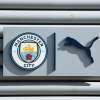Professional bettors are often compared to surfers: they are not looking for just another beautiful wave, but for the one that carries them to the shore faster than the rest. Back in the early 2000s, Bob McCune proposed catching the “waves” of the bookmaker market—line movements—and profiting without diving deeply into team statistics. Below we break down the strategy’s principles, its strengths and weaknesses, and share tips on how to adapt the method to today’s market speed.
Core Idea: Listen to the Market, Not Analysts
The underlying logic of the strategy is simple: a line is the result of a battle of opinions between bettors and the bookmaker’s analysts. When the line moves sharply, it means one side has received important information and started placing large bets. The bettor’s task is to “jump on the tail” of that money before the numbers fully reflect the new balance of power.
The principle works both before kick-off and in live betting. If the odds on the favorite drop, we back the favorite; if they rise, we look at the underdog. The same applies to totals and spreads: wherever the money “flows,” we follow.
Why Lower Leagues Are More Profitable Than Elite Tournaments
McCune focused on less popular competitions—college basketball, reserve football leagues, lower-tier hockey. There are two reasons for this:
- Low Liquidity—on a quiet market, even a few tens of thousands of dollars can noticeably move a line.
- Professional Insider Information—in “small” leagues, bettors are more often cappers connected to teams or agents, with almost no random “steam” from fans.
That is why the strategy gives fewer clean signals on the Premier League or an NBA Final: noise from mass betting makes it harder to spot informed money.
Four Signals the Line Sends
Bob described a clear algorithm:
- Shift Toward the Favorite—take the favorite while the odds are still “fat.”
- Shift Toward the Underdog—back the weaker side, assuming insider info such as an injury to a key player on the favored team.
- Pre-Match Static—if the numbers stay put, bet the favorite before the game: the market is confident in its strength.
- Last-Minute Reversal—the strongest confirmation. If the line has been moving one way for a long time but suddenly flips just before kick-off, follow the latest move.
The method’s author claimed that with even odds around 2.00 you could maintain a hit rate close to 55 %—enough to be profitable over the long haul.
Totals and Spreads: Expanding the Search Radius
Beginners often focus solely on match outcomes, but the strategy’s value is broader. Movements in totals (for example, Over 2.5 ↗ Over 3.0) and spreads (–1.5 ↘ –1.0) bear the signature of the same “hands” that move the main line. A downward turn in a total an hour before an NBA game may signal a lineup change or an expected low-scoring pace that the bookmakers have not yet accounted for. Monitoring additional markets increases the number of finds and diversifies the bankroll.
New Realities: Do We Need Shorter “Binoculars”?
Since 2002 the industry has changed radically: bookmakers now have algorithms for instant margin balancing, betting volumes have grown dozens of times, and line managers receive notifications about large wagers almost instantly. Under these conditions you must:
- Use Odds Scanners that update every 1–2 seconds; otherwise the moment is lost.
- Evaluate Value even if the movement supports your idea. Blindly following the line can lead to steam without positive expected value, especially when commission is above 5 %.
- Give Yourself a Safety Window—wait for a micro-correction that improves the price by about 0.02–0.03 points before placing the bet.
In short, the strategy still works, but it requires technical support and strict discipline.
Adopt It or Archive It? A Practical Verdict
The McCune method is an excellent textbook for those who want to understand line-movement mechanics and develop market vision. It improves your ability to read odds and teaches you to act quickly. However, relying solely on the “dance” of numbers is risky today: bookmakers and pros have become much smarter.
The optimal tactic is to use the strategy as a filter alongside fundamental analysis: look at line-ups, motivation, and schedule, and let sharp moves confirm (or refute) your conclusions. When you see a pronounced shift on a quiet market, you can test the idea with a small “probe” bet or a free bet—experience is worth more than any theory.
In the end, “Line Movement” remains a useful tool, but you should wield it like a scalpel—precisely and carefully—then it truly brings profit rather than extra gray hair.






